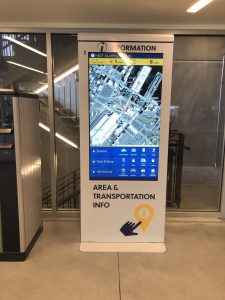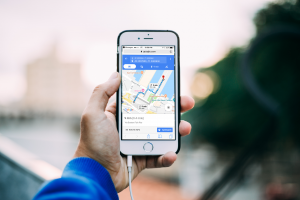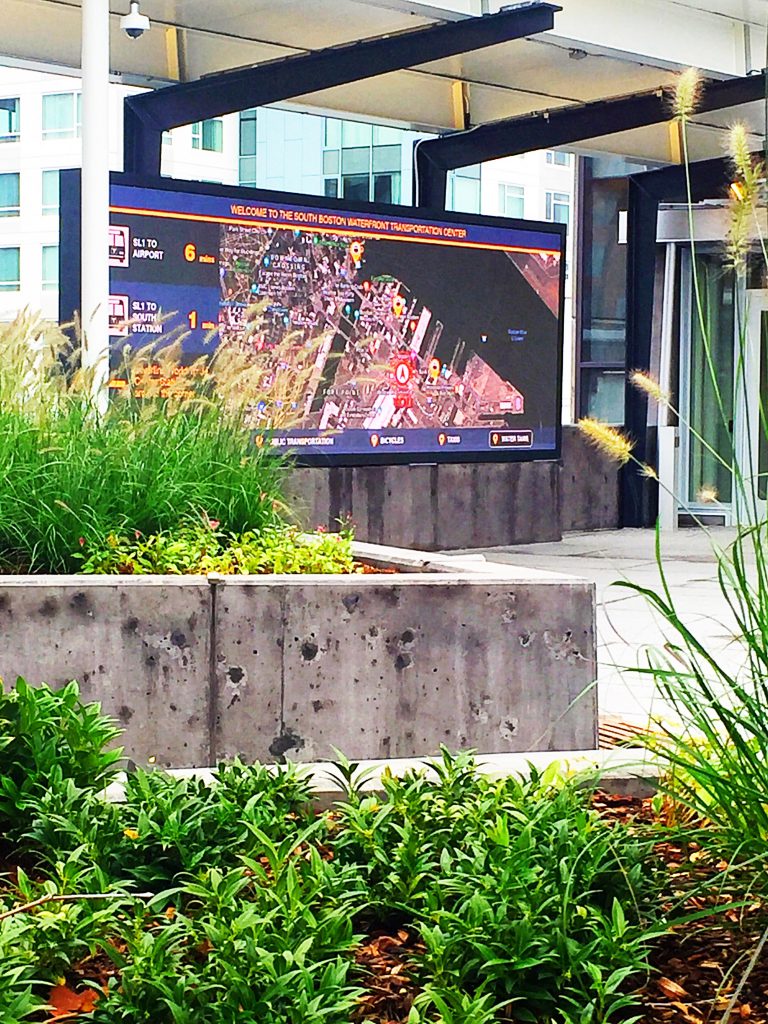The Massachusetts Port Authority (Massport) recently completed the South Boston Waterfront Transportation Center (SBWTC). This facility provides a transportation access hub for the growing Seaport District and all who live, work and visit Boston’s fastest growing neighborhood. Massport’s goal, and commitment to the community, was to make this facility more than just a garage. The goal was to reflect the wider transportation services that Massport accommodates at the complex and nearby.
The SBWTC consists of a 1,550-space parking facility with electric vehicle charging stations, bike share and car share options, in the heart of Boston’s Seaport District and directly adjacent to the World Trade Center Silver Line public transportation station.
Art of Context worked as part of the team that leveraged technology to elevate the user experience of the facility in a way that highlighted and facilitated the usage of the myriad of transportation options available to residents and visitors alike.
Putting Users First
 The team made several design decisions to achieve the project goals within budget and to create an optimal user experience:
The team made several design decisions to achieve the project goals within budget and to create an optimal user experience:
- Quickly orient the user to their location and surroundings
- Leverage an existing map software for maps and directions
- Give persistent real-time headway times for the public transportation center next door
- Highlight points of interest in the neighborhood
- Offer multi-mode transportation options
- Consistent and vetted content and technology across the video wall and kiosk
A large outdoor LED video wall is incorporated in the community plaza portion of the facility and information kiosks are located inside and outside the structure. These kiosks accommodate not only pedestrian flow into and out of the transportation center, but also foot traffic on the street in front, that leads to the Boston Convention and Event Center (BCEC), one of the largest conference spaces in the region.
 The kiosks’ interface was designed to give the user an immediate orientation to their location and surroundings. The menu focuses on points of interests in several transportation modes. The user can take the directions with them through a text link or a QR scan. This action brings up the chosen point-of-interest (POI) in Google maps on the user’s mobile device.
The kiosks’ interface was designed to give the user an immediate orientation to their location and surroundings. The menu focuses on points of interests in several transportation modes. The user can take the directions with them through a text link or a QR scan. This action brings up the chosen point-of-interest (POI) in Google maps on the user’s mobile device.
Using technology to make communities accessible
The kiosk and video wall leverage several API-based sources of real-time data including food trucks and Hubway bike stations to give the user an integrated and aggregated experience that is efficient and relevant, and highlights the vibrant nature of the community.
The video wall is a fine-pitch outdoor LED that is 20 ft long and 10 feet high. It displays both persistent real-time transportation headway times and a large map of the area with rotating POIs. Massport is developing A long-term content strategy for this prominent video wall that will include plaza event information, public service and community announcements as well as potential ad revenue.
Advanced technology simplifies the administrators job
Content administrators can rest easy knowing that Google maps will provide baseline POI content. Content managers are efficiently able to augment this content as needed using Directory Management Studio (DMS). DMS is a cloud-based product from Art of Context, purpose built for managing interactive directories.
System administration is eased by using Chromeboxes as the media players. This enables the IT to manage and monitor this hardware using Google’s simple and secure cloud-based Chrome tools. Also the public interface is integrated with google analytics, giving administrators a familiar interface in which to analyze the system usage.
Massport is hoping to lower the stress of visiting this urban center by providing users with immediate location awareness with all the information needed to confidently take the next step in their journey; whether that next step is jumping on the Silver Line to get downtown, renting a bike, grabbing a snack at a food truck or strolling to a museum. Newly launched in September of 2018, response has been extremely positive.



